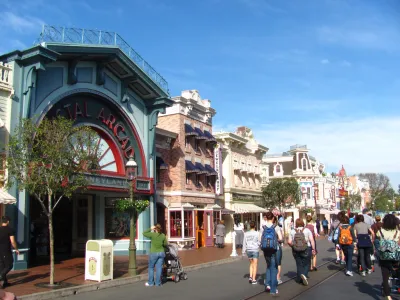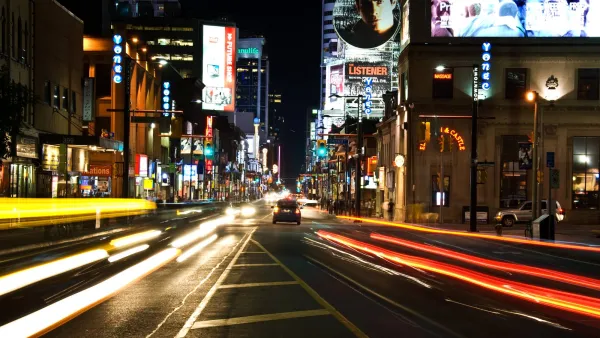A new breed of preservation has sprung up in Toronto, where existing structures are partially preserved to give new building's old facades. But is this attempt to preserve the existing streetscape actually succeeding?

Writing in TreeHugger, Lloyd Alter looks at a new trend in Toronto which has seen the city try to preserve the authenticity of it's streetscape through artificial means. The term "urban taxidermy," used by landscape architect, planner, and architect Robert Allsopp in an article for Toronto's NOW magazine, is used to describe current development requirements in Toronto's Yonge Street Heritage Conservation District that sees "the front 30 feet of existing old buildings are preserved (so it is much more than just facadism) and new condos are built behind and above, in an attempt to preserve the streetscape."
Urban taxidermy seems to be the most popular current compromise between complete heritage preservation and massive, wholesale redevelopment. Instead of facades, we are keeping large pieces of a building's fabric, but what remains gives only the illusion of a vital, fully functioning, street-related structure. What once sustained street life is being replaced by inert material.
...
Is it worth keeping these buildings? Yes, of course, but do we have to kill, stuff and mount them for them to survive? They are more than historical artifacts, bricks-and-mortar facades with finely detailed sills and cornices. They are part of an economic, social and cultural ecology that cannot be disassembled.
As Alter notes, the preservation of the building frontages does little to activate the streets in the short term. The authenticity of the building's place in the neighborhood eco-system is degraded, creating what Robert Allsopp describes as a streetscape diorama which requires a "suspension of disbelief."
FULL STORY: Jargon Watch: Urban Taxidermy

National Parks Layoffs Will Cause Communities to Lose Billions
Thousands of essential park workers were laid off this week, just before the busy spring break season.

Retro-silient?: America’s First “Eco-burb,” The Woodlands Turns 50
A master-planned community north of Houston offers lessons on green infrastructure and resilient design, but falls short of its founder’s lofty affordability and walkability goals.

Delivering for America Plan Will Downgrade Mail Service in at Least 49.5 Percent of Zip Codes
Republican and Democrat lawmakers criticize the plan for its disproportionate negative impact on rural communities.

Test News Post 1
This is a summary

Test News Headline 46
Test for the image on the front page.

Balancing Bombs and Butterflies: How the National Guard Protects a Rare Species
The National Guard at Fort Indiantown Gap uses GIS technology and land management strategies to balance military training with conservation efforts, ensuring the survival of the rare eastern regal fritillary butterfly.
Urban Design for Planners 1: Software Tools
This six-course series explores essential urban design concepts using open source software and equips planners with the tools they need to participate fully in the urban design process.
Planning for Universal Design
Learn the tools for implementing Universal Design in planning regulations.
EMC Planning Group, Inc.
Planetizen
Planetizen
Mpact (formerly Rail~Volution)
Great Falls Development Authority, Inc.
HUDs Office of Policy Development and Research
NYU Wagner Graduate School of Public Service



























